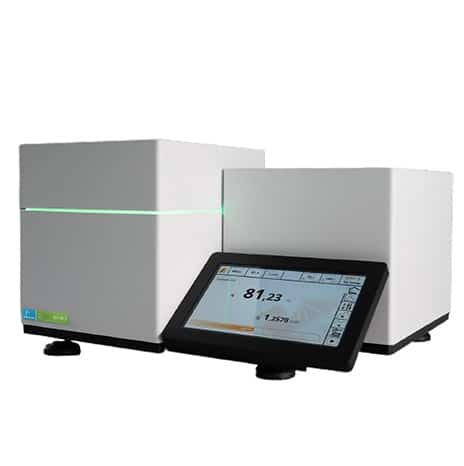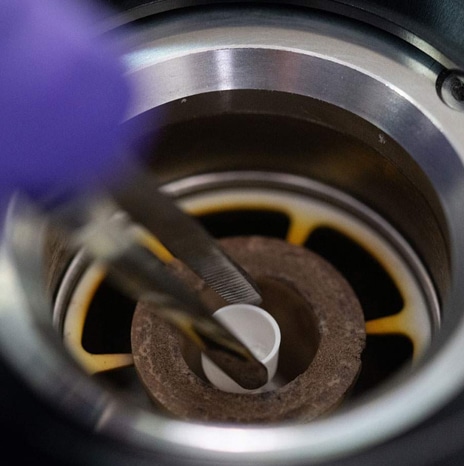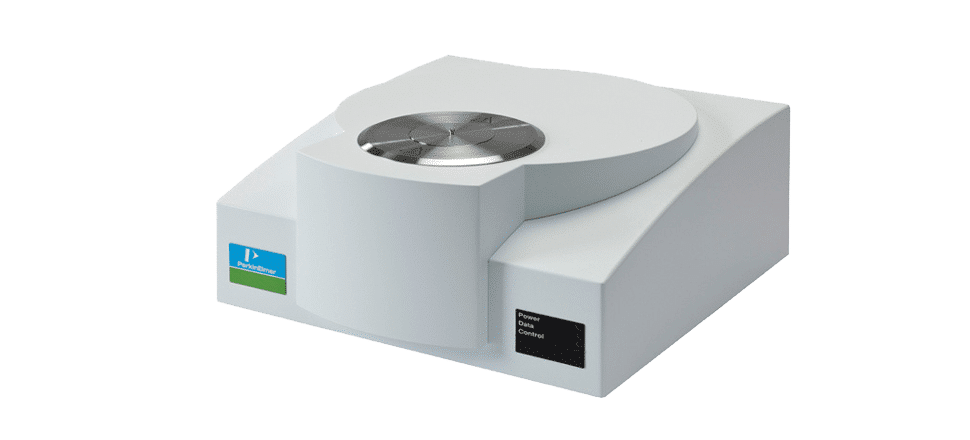Analyseur thermique simultané Pyris STA 9
Perkin Elmer
Performance and flexibility for comprehensive thermal analysis.
The Pyris STA 9 is the ultimate tool for precise thermal analysis with its ability to simultaneously acquire TGA and DSC data. It offers optimal temperature control and ease of use through its intuitive touchscreen interface.
Advantages
Interchangeable furnaces : Modular design offering flexibility with TGA and STA instruments.
Intuitive touchscreen : Simplifies control and management of the instrument.
48-position autosampler : Enables unattended sample analysis, perfect for extended sessions.
Proven reliability : Compact design with 25 years of proven performance and precise temperature control.
Wide applications : Comprehensive thermal analysis ranging from engine oil volatility to thermal stability studies.
The Pyris STA 9 allows simultaneous acquisition of TGA and DSC measurements, offering advanced thermal performance for a wide range of applications. Designed for high-temperature thermal analysis up to 1100°C, this modular instrument is ideal for labs requiring both TGA and STA analysis. Its interchangeable furnace and 48-position autosampler facilitate ease of use, while the intuitive touchscreen ensures precise temperature control.
| Specification | Value |
|---|---|
| Balance Capacity | 1500 mg |
| Temperature Range | 15 – 1100 °C |
| Balance Resolution | 0.1 µg |
| Balance Accuracy | ± 0.01% |
| Temperature Precision | < 0.05% |
| Heating Rate | 1 to 300 °C/min (controlled) |
| Cooling Rate | 1000 to 30 °C in less than 20 minutes |
| Calorimetric Accuracy | ± 1.5% |
| Calorimetric Precision | < 0.5% |
| Isothermal Balance Drift | < 2 µg/hour |
| Sample and Programme Temperature Correlation | < 0.01 °C |
| Sample and Programme Temperature Repeatability | < 0.01 °C |
| Sample Pans | Alumina, Platinum |
| Purge Gas | Nitrogen, Helium (Inert), Compressed Air, Oxygen (Oxidative), Argon (Inert) |
| Weight | 12 kg |
| Instrument Control | Pyris Software control or stand-alone operation using the integrated touchscreen |
Compositional analysis – Quantitative content analysis
Decomposition temperatures
Engine oil volatility measurements (TGA Noack test)
Flammability studies
Lifetime predictions (via TGA kinetics software)
Measurement of volatiles (e.g., water, oil)
Oxidative and thermal stabilities
Catalyst and coking studies
Hyphenation for product identification
Melting/crystallization behavior
Glass transition temperatures
Transition and reaction enthalpies


